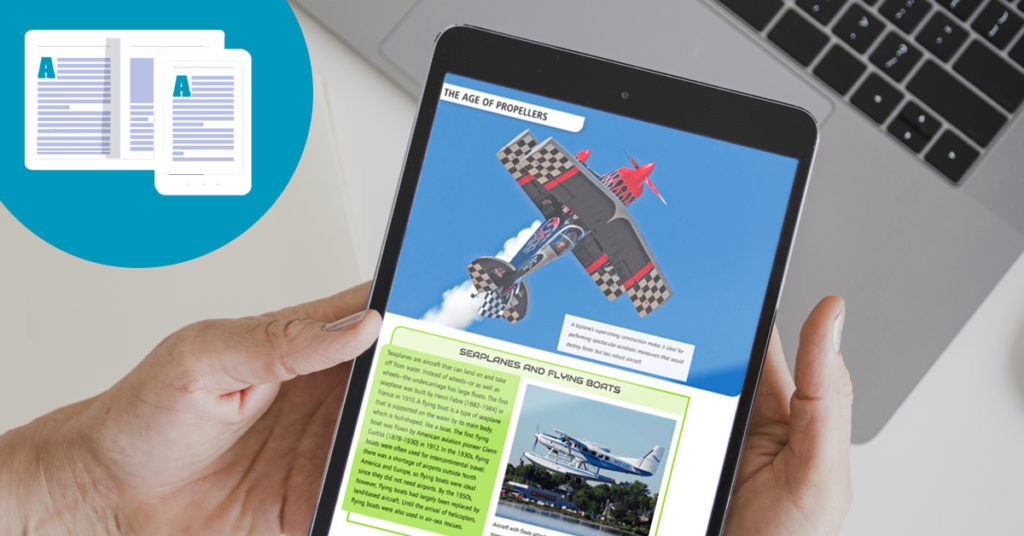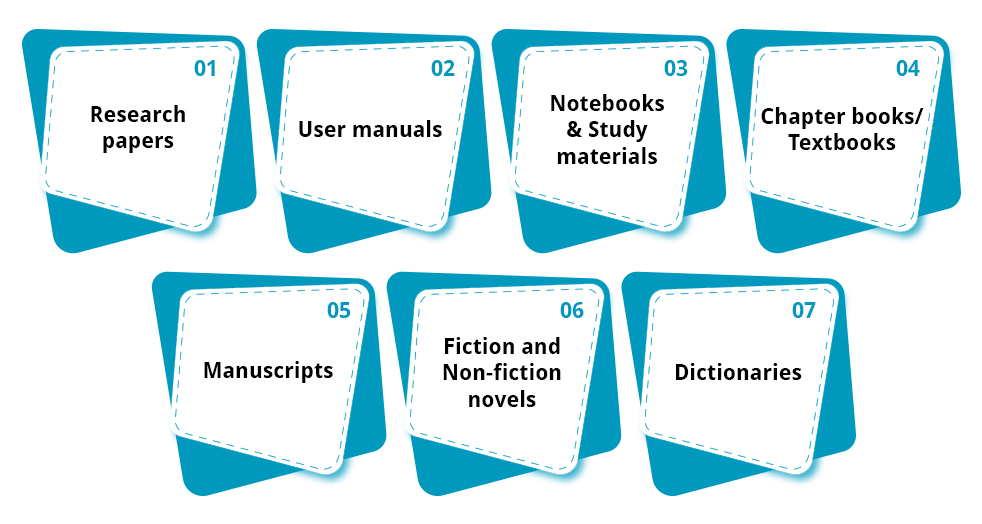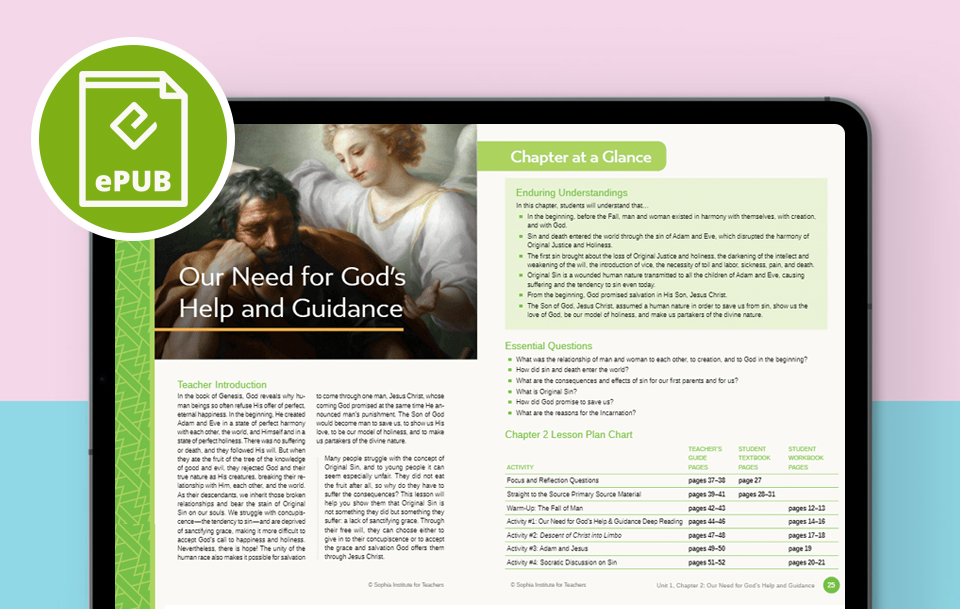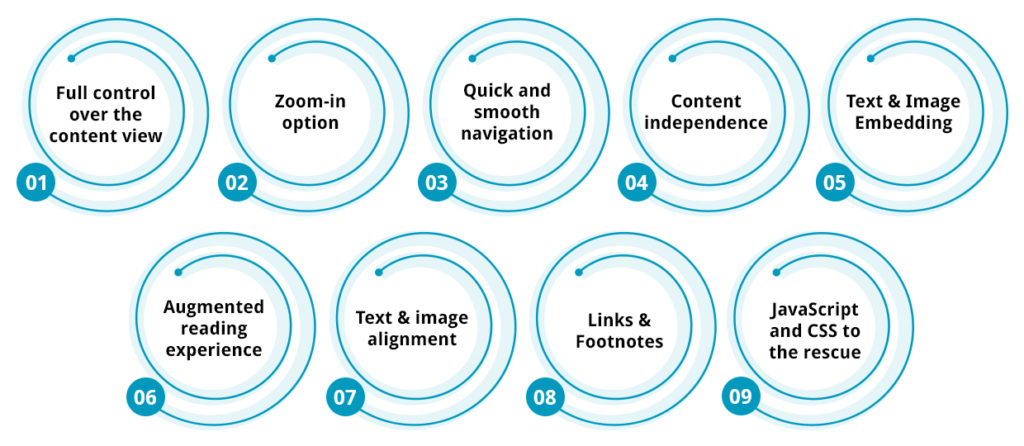
Intend to render an immersive experience to your potential eBook readers but unable to make a choice between reflowable and fixed eBook layout? No worries! This blog throws light on the role of both fixed and reflowable eBook layouts in maximizing the reach to a large reading audience and helping you decide on a particular layout for your eBooks.
All About Fixed Layout eBook Conversion
There has been a major transition in the publishing industry vertical with the emergence of eBooks. eBooks are being extensively used for the consumption of information and what makes them stand out is the way they are demonstrated to potential audiences. With the existence of two eBook layout designs – reflowable and fixed layouts, it has become imperative for publishing houses, publishers, authors, and other stakeholders to understand how to select the most fitting layout for their projects.
The layout or design of an eBook plays an extremely crucial role in reaching out to a wider reader base. How? By simply illustrating the content in a captivating manner. Authors and publishers need to lay focus on picking an appropriate layout design equipped with ideal fonts, arrangements, color schemes, etc. in order to entice potential readers towards their digital content. The prime focus of every author or publishing house should be to present their digital content in a way that is more convenient, easily accessible, and, at the same time, enjoyable for the audience.
First, let us thoroughly understand both the fixed as well as reflowable eBook layouts.
eBook layout: A quick brief
An eBook layout design is basically a manner in which you present different elements of your eBook while keeping your readers interested and engaged. It is a rather artistic way of organising the elements in order to compel your reading audience to scroll right to the last page of your eBook. Since the digital publishing industry has grown manifolds encouraging digital transformations at growing rates, it has become imperative for authors, publishing houses, and publishers to be very particular about the type of layout they choose for their eBooks.
The eBook layout or design should be such that it grabs the attention of prospective readers to read more of your content. The intent is to create an appealing image by engaging the prospective reading audience with an enticing eBook enriched with interactive elements. The majority of authors, publishing houses, and publishers are confused as to which eBook layout would do justice to their digital content. To overcome this challenge and to make sure that your eBooks extend to a larger reader base, one must pick a befitting eBook layout from the two most favoured ones – Reflowable layout and Fixed layout ePUB.
Before you actually make a decision as an ardent author or publisher, let us first help you comprehend the main aspects of both the layouts including what both the layouts actually offer, and what kind of content is right for both layouts. We will also help you undermine the differences between them.
Reflowable Layout ePUB – A Quick Overview

As the name suggests, a reflowable layout is a flexible format that adapts to any screen size quite easily. It can be referred to as a standard layout for almost all kinds of eBooks. The content presented in a reflowable layout can be adjusted to almost every mobile device or eReader by realigning it across the pages. Due to its widened reach and compatibility, it is regarded as one of the most ideal and popularly known eBook formats that publishers, publishing houses, and authors pick for their eBooks.
Since text can be adjusted quite easily based on the screen size, a reflowable eBook layout design is most pertinent for eBooks that comprise text-based content with a limited number of animations, images, graphics, and other engaging elements.
Some of the prominent types of eBooks that can be built and presented in reflowable layout design include the following:
- Research papers
- User manuals
- Notebooks & Study materials
- Chapter books / Textbooks
- Manuscripts
- Fiction and Non-fiction novels
- Dictionaries
Fixed Layout (FXL) ePUB – A Quick Overview

A fixed-layout format is basically used by publishing houses, publishers and authors for digitizing their physical books by accommodating content of static nature. This type of layout is primarily utilized to keep the design, alignment, and formatting intact. It is basically preferred for eBooks that contain multimedia-heavy content with a couple of engaging elements. The interactivity factor can help boost reader engagement and ensure that the intended user gets an augmented reading experience.
The intent is to keep the digital content in suitable places and make it more meaningful with a predetermined flow of content. After all, a simple change in the alignment can pose a drastic change in the overall view and also affect the main intent or context, losing the very essence of the eBook.
Some of the notable types of eBooks that can be built with a fixed layout ePUB design include the following:
- Instruction manuals
- Manga
- Coffee table books
- Children’s comic books
- Technical manuals
- Concept books
- Storybooks
- Early age chapter books
- Memoirs
- Recipe books or Cookbooks
- Illustrative books
- Graphic novels
- Yearbooks
- Toy books
Unable to select the right format for your eBooks? Get help from our digital experts right away!
Reflowable VS Fixed layout: A Brief Comparison
Let us now throw some light on the key differences between reflowable layout and fixed layout design.
| Basis | Fixed Layout (FXL) | Reflowable |
|---|---|---|
| Readability | The size and the position of content can’t really be modified and so, the user will have to scroll and zoom in to read with ease. | Since content presented in a reflowable layout can easily adjust to any screen size, the readability score will always be high. |
| Device support | Fixed layout is not supported by most eReaders and devices. | A reflowable design is well-suited for almost all mobile devices and eReaders. |
| Interactivity factor | The fixed layout eBooks comprise a variety of interactive elements including animations, images, videos, and text-to-speech features. | Reflowable eBooks limit to only text-based content with minimal use of graphics or images. |
| Costs involved | Fixed layout eBooks require complex formatting. The interactivity feature makes it a costly affair. | Reflowable eBooks primarily include text-based content. They do not have a scope of formatting, so, the costs involved are comparatively less. |
| Font changes | No size or font changes can be implemented. The reader needs to scroll through the entire content or simply zoom in, if need be, to fit the content into the screen size and read comfortably. | As the content aligns and flows based on the screen size, the font or size can be easily modified in order to make the content expand or reflow. |
| Reach | It might gain more readership over a particular period of time, but, currently, the reach and popularity of fixed-layout eBooks is very limited. | Reflowable eBooks are well-supported by almost all the devices and eReaders, and they have an increased reach and popularity in comparison to fixed layout eBooks. |
| Suitability | Fixed layout is meant for eBooks containing multimedia-rich content such as children’s comic books, cookbooks, etc. | A reflowable layout is ideal for eBooks containing text-based content such as user manuals, fiction novels, etc. |
Depending on the nature of the content to be used in the eBooks, authors, publishing houses, and publishers can decide on a certain eBook layout. For instance, if the content is in PDF format, then it is preferable to go for a reflowable eBook layout format. However, if there are plenty of images or graphics in the content, then it is better to select a fixed layout ePUB design.
Prominent Benefits Of Fixed Layout ePUB Conversion Publishers Can Leverage

The majority of authors and publishers go for a fixed layout design for their eBooks. It is the most sought-after format, especially for graphically illustrated eBooks requiring complex formatting. Whether it comes to children’s comic books, recipe books, or travel guides, fixed layout eBook conversion is most appropriate for each one of them. Let us help you understand how authors and publishers can actually leverage fixed layout ePUB conversion to boost engagement with some prominent advantages.
1. Full control over the content view
When an author or publisher chooses to use a fixed layout design for his/her eBooks, then he/she has complete control over how the eBook is showcased to the potential reading audience on the screen. The fixed layout uses pixel-specific page size to modify the layout of content including images, text, and other vital elements.
2. Zoom-in option
A fixed layout design offers a rather comfortable reading experience by providing better content visibility. To ensure this, fixed layout eBooks offer zoom-in as well as zoom-out options for text-based content. Readers can easily search for the information they need with the zooming view option.
3. Quick and smooth navigation
Fixed layout eBooks provide easy search options to the reading audience and allow them to browse through the entire eBook more comfortably.
4. Content independence
Another prominent advantage of fixed layout ePUB conversion that publishers can leverage is content independence. The overall content quality is easily managed across various software and devices by the designers.
5. Text & Image Embedding
Embedded text and images can be leveraged by publishers and authors to make their digital books accessible to relevant users and read-aloud audiences. There are a few features that a fixed layout provides to the publishers, for instance, multi-column text pages with thumbnail navigation, semantic structuring, dictionary linking, etc.
6. Augmented reading experience
Authors and publishers can easily improve the overall reading experience of readers by incorporating interactive elements and illustrations into their digital books.
7. Text & image alignment
In order to make the digitised content more meaningful and worth reading for the reader base, the alignment of text and images becomes imperative. Fixed layout conversion renders just that! The images, as well as text, can be aligned properly to facilitate better clarity.
8. Addition of links, annotations, footnotes, cross-references, etc.
Enriching your eBook content with annotations, cross-references, and footnotes, along with links to external websites is very much possible with fixed layout ePUB conversion.
9. JavaScript and CSS to the rescue
Opting for a fixed layout eBook conversion process allows authors and publishers to offer multiple features and incorporate them into their eBooks including MCQs, animations, quizzes, exciting games, and many more interactivities for an augmented reading experience.
How Data-Entry-India.com Can Help
Data-Entry-India.com offers accurate and cost-efficient fixed layout ePub conversion services along with effective reflowable layout conversion for an augmented reach and engagement. Hire us as your offshore fixed layout ePub conversion service providing company to get access to our extensive pool of highly skilled and professional eBook developers working incessantly to deliver quality outcomes. Our experts are here to help you pick the most befitting layout for your eBooks and also assist you in the development process. Get in touch with us at info@data-entry-india.com to take things forward.
More on Reflowable vs Fixed layout
1. How to convert PDF to a Fixed layout ePub format?
These types of conversions are better left to professionals. Hire our seasoned experts to carry out a smooth and hassle-free eBook fixed layout conversion process within the stipulated time frame.
2. Is it possible to format an ePUB book?
An ePUB book is basically an open eBook file format approved by the International Digital Publishing Forum (IDPF). In order to format an ePUB file, we have a dedicated team of proficient experts that can assist you in accomplishing the job.
3. How to publish a secure eBook and prevent unauthorized access?
Carrying out the fixed layout eBook conversion process can prove to be cumbersome and laborious. However, with our seasoned digital experts, publishers and authors will not only be able to ease out the entire conversion process, but also get access to our high-end, reliable solutions to ensure safe and secure eBook production, conversion, access, and sharing.
4. What Are The Most Common Fixed-layout eBook Formats?
Our digital experts offer professional fixed layout ePUB conversion services and are well-versed with all kinds of eBook designs presented in different formats such as ePUB, DOCX, DOC, AZW, MOBI, HTML, TXT, PDF, etc. Some of the prominent eBook formats are:
- ePUB3
- Kindle Textbook Creator
- Kindle Comics
- KF8 (Amazon Kindle)
- NOOK Kids ePIB and NOOK Comics (Barnes & Nobles)
- Kindle Print Replica
- PagePerfect PDF (Barnes & Nobles)
- iBooks Author (Apple iBooks and iTunes)
5. How are Fixed Layouts Necessary For eBooks?
eBooks with a fixed layout design are best-suited to keep the text, videos, images, animations, and other interactive elements in place and allow readers a comfortable and captivating reading experience. Fixed layout ePUB design is necessary due to the following key attributes it offers:
- Text-to-speech feature
- In-Page searches
- Text size customization
- Zoom-in & zoom-out capabilities for text and pictures
- Complete control over content view
- Cross-references and annotations
- Dictionary linking
- Bookmarks
- Thumbnail navigation
- Quizzes, games, animations
6. Is there a way to convert PDF to EPUB without ruining the original formatting?
Yes, indeed. A fixed layout ePUB design is ideal for eBooks requiring all kinds of complex formatting. If you own eBooks in PDF format, we can help you convert them into ePUB seamlessly, keeping the original formatting intact. Simply opt for our PDF conversion services to take things forward.
